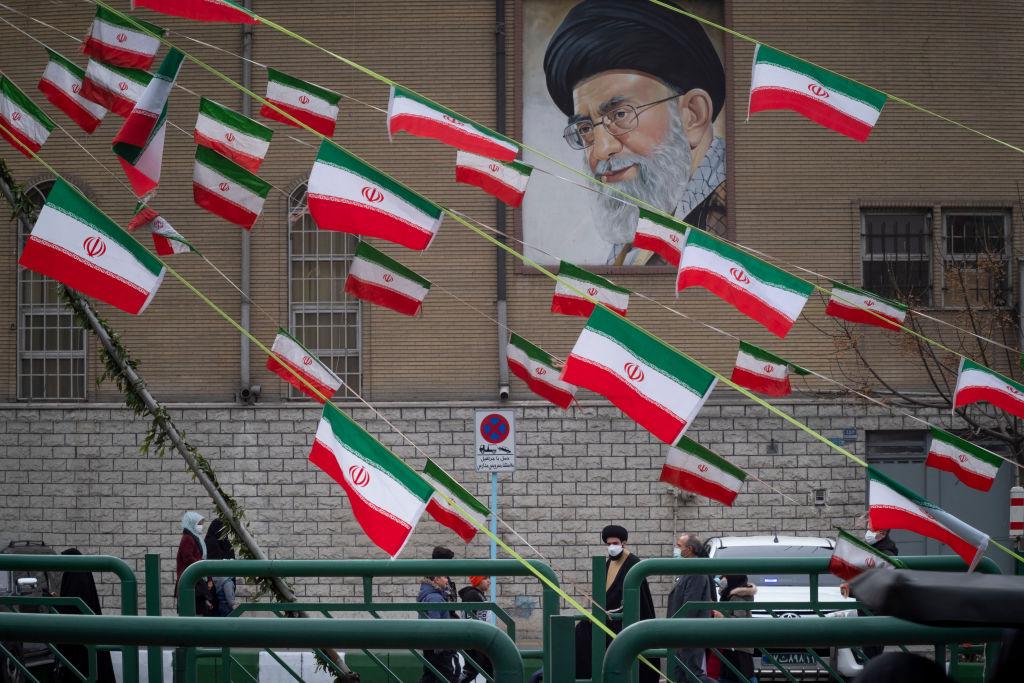
This month marks the 43rd anniversary of the advent of Iran’s Islamic regime. It took power in the wake of the revolution of 1978–79 that toppled the Shah’s pro-Western monarchy, transforming the mainly Shia Iran into an Islamic republic, with an anti-US posture. It challenged the US-dominated regional order and the international system.
At the time, many critics regarded the regime as an oddity in world politics and seriously doubted its longevity. Yet, the regime has defied all predictions and grown to become an important player in the region and on the international stage. What has made it so durable?
The regime has managed to weather many serious domestic and foreign policy problems, causing it periodic regional and global isolation at a high cost for Iranian society. The challenges have included internal power struggles, a devasting war with Iraq in the 1980s, continued hostility with the US and its regional allies and Israel in particular, and US-led sanctions over Iran’s nuclear program and alleged support for international terrorism. There was also the Soviet invasion of Afghanistan, the US invasion of Afghanistan and Iraq (both Iran’s neighbours) and the rise of the anti-Shia Islamic State in Iraq and Syria.
Several factors account for the regime’s resilience, but three stand out. The first is the politically pluralist theocratic nature of the regime, as defined by the founder and first supreme leader of the Islamic Republic of Iran, Ayatollah Ruhollah Khomeini (1979–1989). The system of velayat-e faqhi (the guardianship of the Islamic jurist) that Khomeini established spawned an interplay primarily between two clerical factions.
One is jihadi, or conservative and hardline, denoting an adherence to a traditionalist view of Islam and advocating a ‘combative’, revolutionary and largely inward-looking approach to Islamic governance and Iran’s transformation. The other is ijtihadi, or reformist and internationalist, relying on a creative interpretation and application of Islam according to changing times and conditions, based on independent human reasoning.
The jihadi faction, who identify themselves as the core followers of Khomeini, dominated the levers of power from the early days of the Islamic regime. The ijtihadi faction began to take shape from 1988 in support of Khomeini but advocating a moderate, pluralistic Islamic system of governance with a humane face.
Although initially the two factions, as multi-faceted as they have been, cooperated in the conduct of Iran’s domestic and foreign policy, over time they differed on what constituted a good and workable Islamic system of governance. The result has been an Iranian Islamic state that has become less ideological and more pragmatic in the management of the country’s affairs. It has assumed a degree of internal elasticity and external flexibility, irrespective of which faction has been in power. Hence, for example, the anti-extremist President Hassan Rouhani’s signing of the 2015 nuclear agreement (the Joint Comprehensive Plan of Action, or JCPOA) with the five permanent members of the UN Security Council, plus Germany.
The impulsive Republican US President Donald Trump withdrew from the agreement in May 2018 and imposed harsh sanctions to pressure Tehran for a better deal in accord with American interests and those of Iran’s two regional rivals, Israel and Saudi Arabia. Tehran retaliated by expanding its centrifuges and uranium enrichment to the alarm of Trump’s Democratic successor, Joe Biden.
Biden has sought to revive the JCPOA, and Rouhani’s successor from the hardline faction, Ebrahim Raisi—a close ally of the powerful supreme leader, Ayatollah Ali Khamenei—has shown amiability. Raisi is keen to reach an agreement in return for the lifting of America’s crippling sanctions and a guarantee that future US administrations won’t repeat Trump’s actions. Biden wants to secure a deal to prevent Iran from acquiring a military nuclear capability and to enable the US to focus more on its global adversaries, Russia and China.
The second factor is that, despite all the economic and financial difficulties caused partly by US sanctions and partly by mismanagement and malpractice, the regime has managed to strengthen its hard- and soft-power capabilities. It has done so with a clear objective to make any attack on Iran very costly for its perpetrator through a strategy of asymmetrical warfare. It has concurrently taken advantage of America’s policy failures in the region to forge close organic and strategic relations with several national or subnational actors, especially in Iraq, Syria, Lebanon and Yemen, to build a regional security architecture and deterrence system. In the event of a war with the US or Israel or both, the regime has secured the necessary means to turn an assault on Iran into a regional inferno—an issue that must make its adversaries ponder on the cost of a confrontation with Iran.
The third factor is that, while the regime has lost much of its gloss with the Iranian public—most of whom belong to the post-1978–79 revolution generation and want political and social rights and freedoms and economic prosperity—it still commands sufficient state instrumentalities of power to deal with any nationwide uprisings. It has forged a mixture of heavenly and earthly measures of legitimacy, based on a blend of Islam with Iranians’ historical sense of fierce nationalism to support an electoral polyarchy.
While Iran and, for that matter, the Middle East have often defied predictions, Iran’s Islamic regime is well saddled to ensure its survival against all internal and external odds. It has achieved a position of regional solidity and influence that could not have been anticipated at any time. It has rejoiced in the US defeat in Afghanistan and forged close ties with Russia and China to counter US pressure. How long will this situation last? Only time will tell.